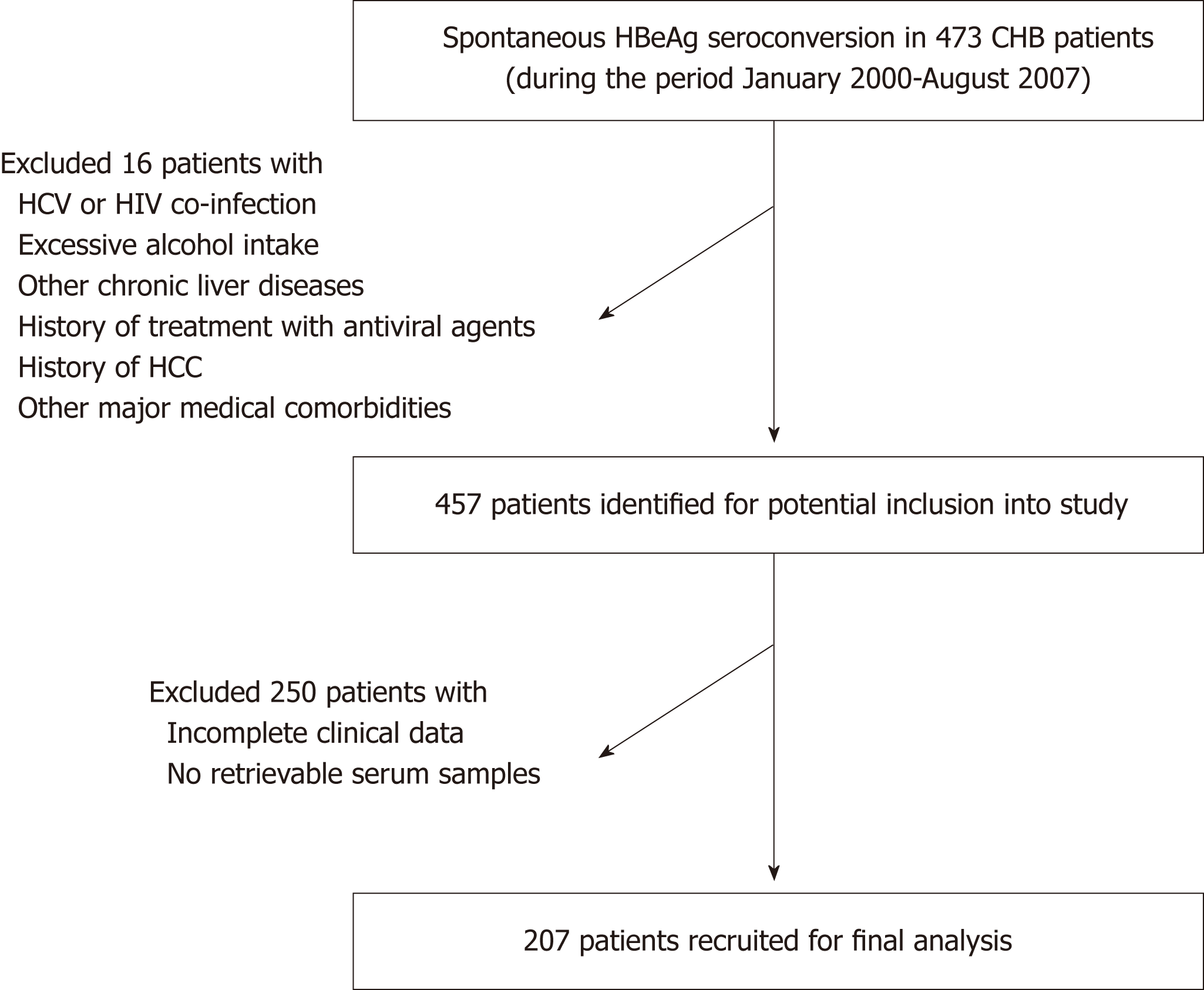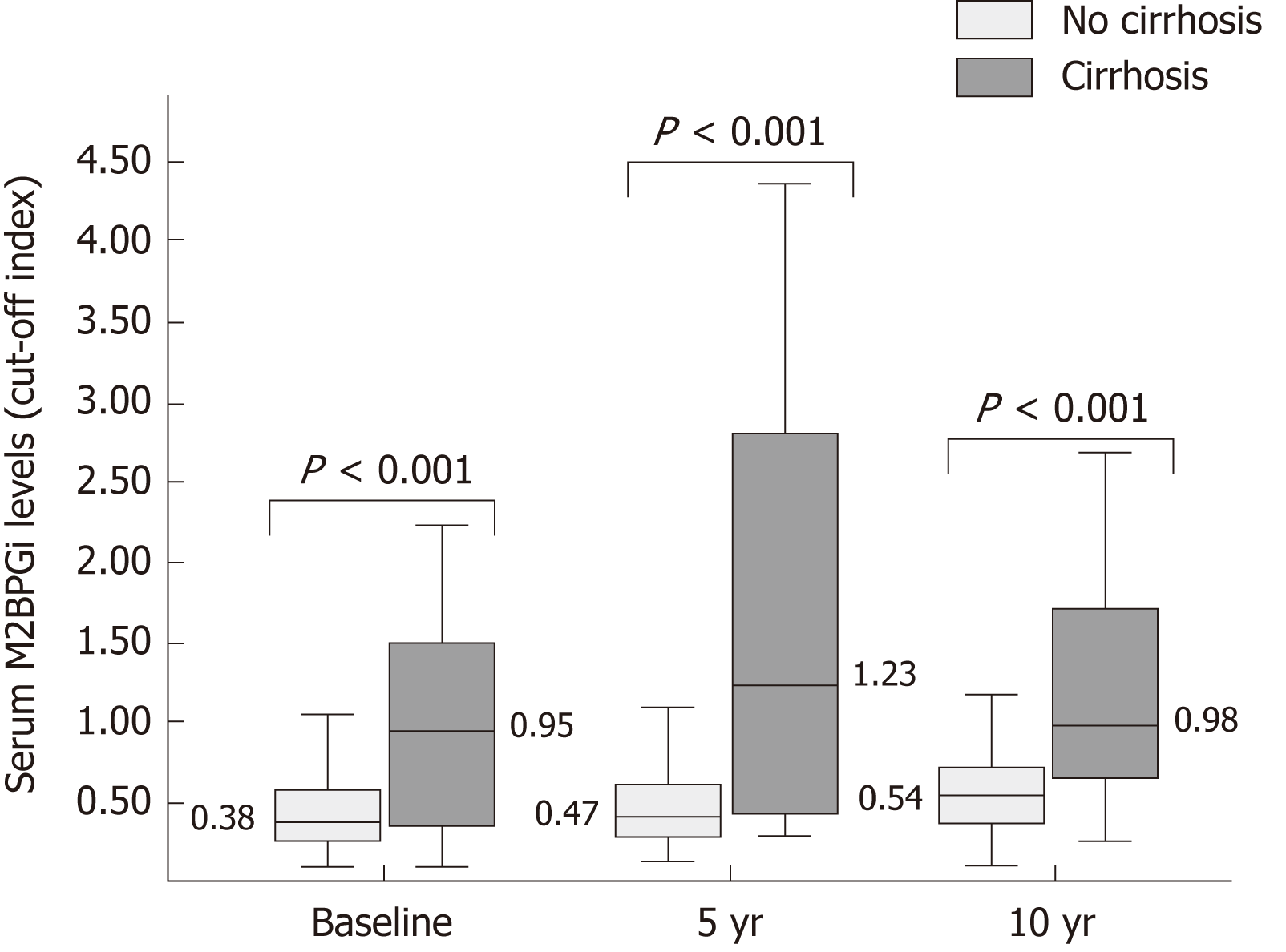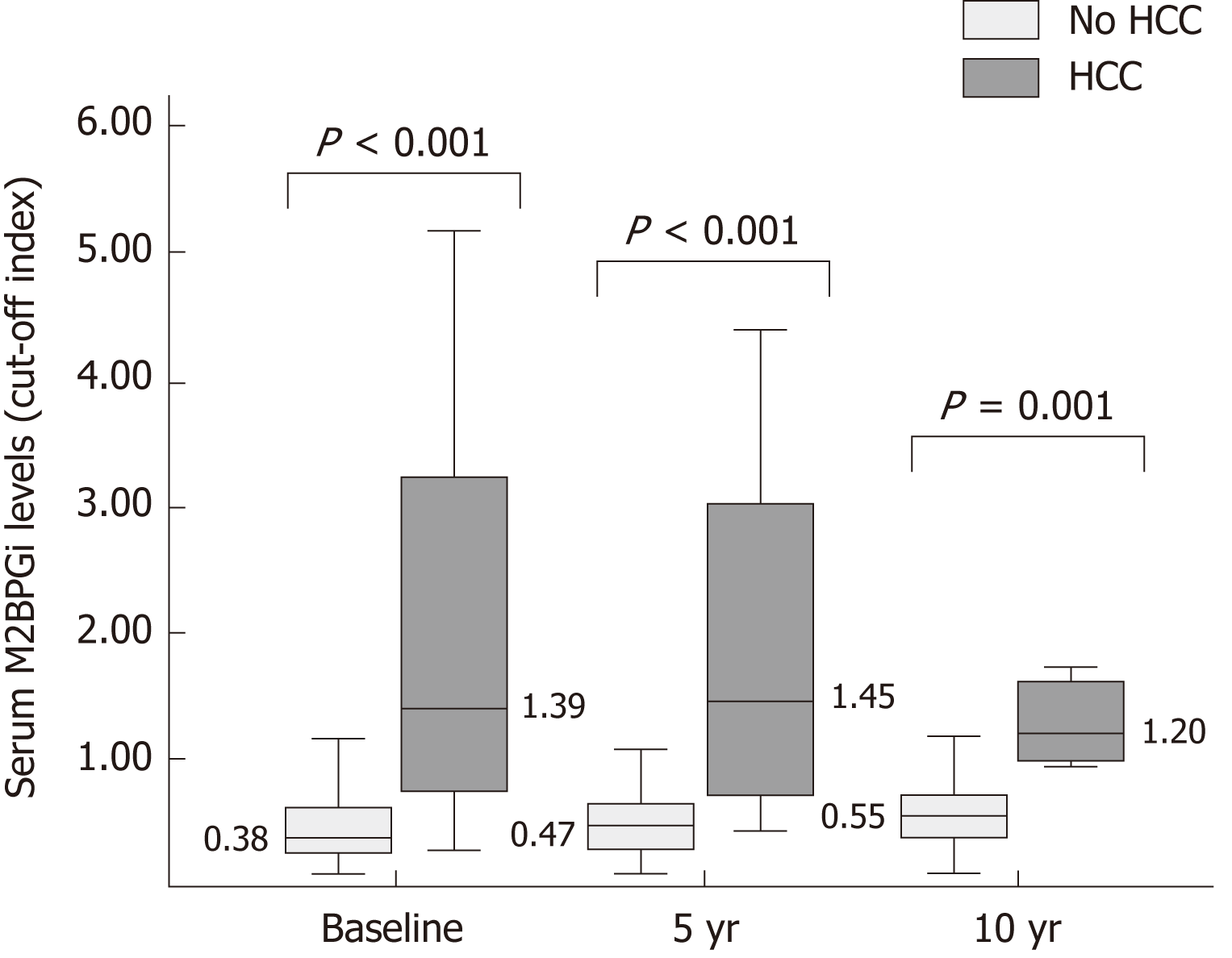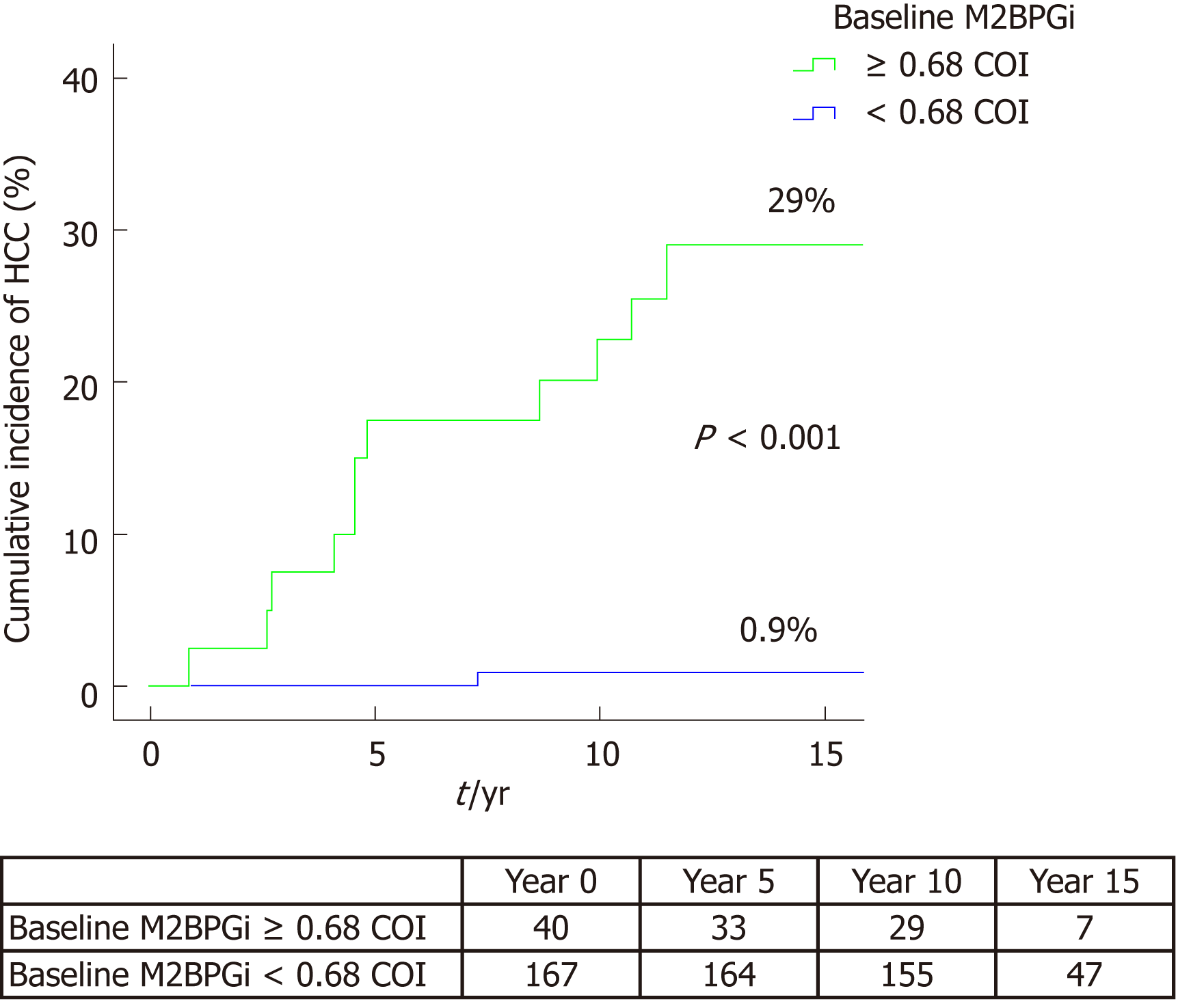Copyright
©The Author(s) 2019.
World J Gastroenterol. Mar 21, 2019; 25(11): 1398-1408
Published online Mar 21, 2019. doi: 10.3748/wjg.v25.i11.1398
Published online Mar 21, 2019. doi: 10.3748/wjg.v25.i11.1398
Figure 1 Patient disposition.
CHB: Chronic hepatitis B; HCC: Hepatocellular carcinoma; HCV: Hepatitis C virus; HBeAg: Hepatitis B e antigen; HIV: Human immunodeficiency virus.
Figure 2 Serum Mac-2 binding protein glycosylation isomer levels at baseline, 5 years and 10 years after hepatitis B e antigen seroconversion according to presence of cirrhosis.
Boxplot: Horizontal lines, colored bars and error bars represent median, interquartile range and 95% confidence interval, respectively. M2BPGi: Mac-2 binding protein glycosylation isomer.
Figure 3 Serum Mac-2 binding protein glycosylation isomer levels at baseline, 5 years and 10 years after hepatitis B e antigen seroconversion in patients with or without subsequent development of hepatocellular carcinoma.
Boxplot: Horizontal lines, colored bars and error bars represent median, interquartile range and 95% confidence interval, respectively. HCC: Hepatocellular carcinoma; M2BPGi: Mac-2 binding protein glycosylation isomer.
Figure 4 Cumulative incidence of hepatocellular carcinoma according to baseline serum Mac-2 binding protein glycosylation isomer level.
COI: Cut-off index; HCC: Hepatocellular carcinoma; M2BPGi: Mac-2 binding protein glycosylation isomer.
- Citation: Mak LY, To WP, Wong DKH, Fung J, Liu F, Seto WK, Lai CL, Yuen MF. Serum Mac-2 binding protein glycosylation isomer level predicts hepatocellular carcinoma development in E-negative chronic hepatitis B patients. World J Gastroenterol 2019; 25(11): 1398-1408
- URL: https://www.wjgnet.com/1007-9327/full/v25/i11/1398.htm
- DOI: https://dx.doi.org/10.3748/wjg.v25.i11.1398












